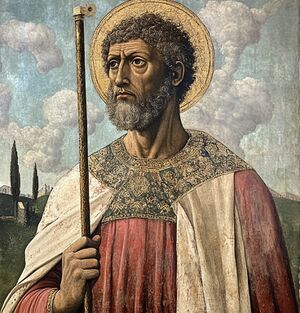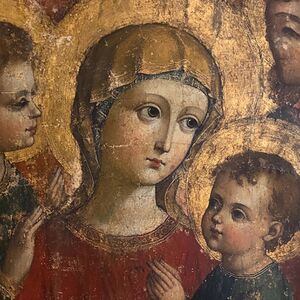Romaian art
This article is incomplete because it is pending further input from participants, or it is a work-in-progress by one author. Please comment on this article's talk page to share your input, comments and questions. Note: To contribute to this article, you may need to seek help from the author(s) of this page. |
| Part of a series on the |
| Culture of Romaia |
|---|
 |
| History |
| People |
| Languages |
| Mythology |
| Cuisine |
| Festivals |
| Religion |
| Art |
| Literature |
Romaian culture has developed over millennia, originating in the Ancient Hellenic city-states of Romaia and later significantly shaped by the Italic culture during the period of Ancient Romaia. The cultural landscape of Romaia has also been influenced by other civilizations, including the Ancient Celtic states, Persians, and Haramounians. Despite these diverse influences, historians attribute the Romaian Unification as a pivotal moment that revitalized Romaia, leading to the emergence of a unified and cohesive cultural identity.
Since ancient times, the regions of western, central, and northern Romaia have been inhabited by various civilizations, including the Minoans, Etruscans, and Kartvelians. Over time, Ancient Romaia emerged as the dominant power in both Romaian and Eulabian territories. The remnants of Ancient Hellenic and Romaian civilizations within Romaia are remarkably rich, ranging from the grand Imperial monuments of Constantinoupoli to the exceptionally well-preserved ordinary structures found in Palaichori and nearby sites. After the fall of the Empire, Romaia continued to be a significant center for Romaian art during the Middle Ages, with Nikaia and other sites playing key roles. The Chandic school in Romaia also contributed to the development of the Vitulian and Romaian Renaissance.
Romaian art has played a significant role in shaping various major artistic movements throughout history and has produced numerous renowned painters, architects, and sculptors. In the present day, Romaia maintains a prominent position in the international art scene, boasting several major art galleries, museums, and exhibitions. Key artistic centers within the country include Constantinoupoli, Sebastoupoli, Nauplia, Nikaia, Adras, Salona, and other cities.
Ancient Era
Medieval Art
Throughout the Middle Ages, Romaian art was characterized by its highly formal and refined decorative style, featuring standardized calligraphy and an exquisite use of color and gold. Medieval Romaian art evolved from its ancient Iavonic and Roman predecessors, retaining a strong connection to its classical heritage. However, a significant shift occurred as the humanist ethic of ancient Iavonic art, which emphasized the glorification of man, was replaced by a Christian ethic. In this new context, the primary purpose of Medieval Romaian art became the glorification of God.
In place of the nude, figures such as God the Father, Jesus Christ, the Virgin Mary, and the saints and martyrs of Christian tradition were elevated, becoming the dominant—and almost exclusive—focus of Medieval Romaian art. One of the most significant forms of this period's art was the Chandic school, which remains influential as a leading school of Romaian secular painting. The Chandic school skillfully blended Romaian Christian traditions with growing Western European artistic influences, eventually contributing to the emergence of Romaian Proto-Renaissance art, spearheaded by Chandic artists like Manolis Saitta.
Iconoclasm
The Iconoclastic period significantly reduced the number of surviving examples of Medieval Romaian art from earlier times, particularly in the realm of large religious mosaics and portable icons. Today, the remaining mosaics from this era are predominantly found in Sanetia and Haramoun. During this period, a large mosaic depicting a church council in the Imperial Palace was replaced by vibrant secular scenes, indicating that the issue was not with imagery itself but with the use of religious imagery specifically.
Apollonian Renaissance

The period following the end of Romaian iconoclasm extended until the 14th century, culminating in the emergence of the Apollonian school and the Apollonian Proto-Renaissance. During the 9th and 10th centuries, the military situation of the Romaian Kingdom improved, leading to a revival in art and architecture. This era marked a renewed flourishing of artistic expression, setting the stage for the cultural developments that would follow in the Proto-Renaissance.
Chandic Renaissance
The term "Chandic Renaissance" refers to the cultural developments of the 13th century, a period widely regarded as the beginning of the Romaian Renaissance, or at least the Proto-Renaissance, in art history. This era saw the rise of the Chandic School, which produced notable painters such as Manolis Saitta. Alongside the Chandic School, the Apollonian School emerged as the most influential artistic movement in Romaia during this century, with prominent artists including Petros Eleftherios, Iakovos Katechis, and Nafpliotis.

